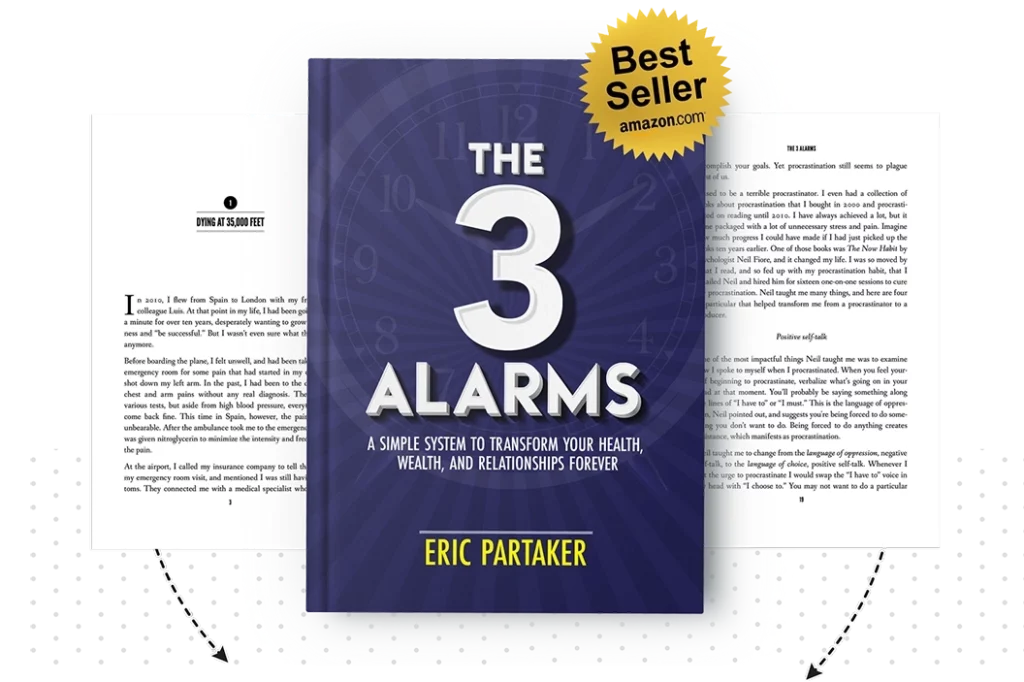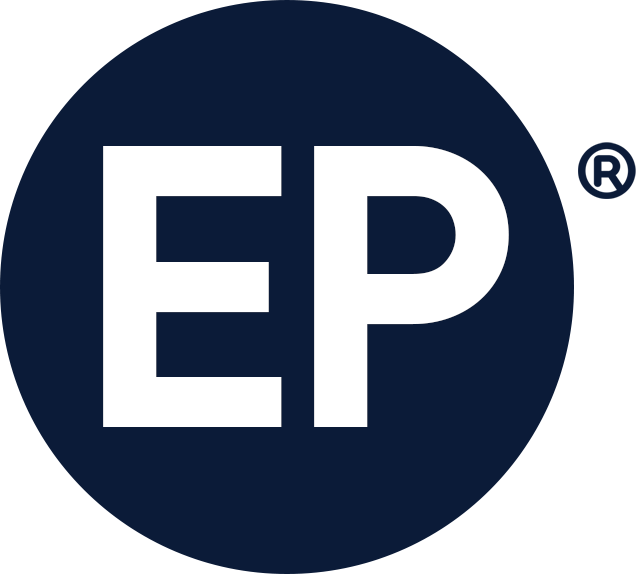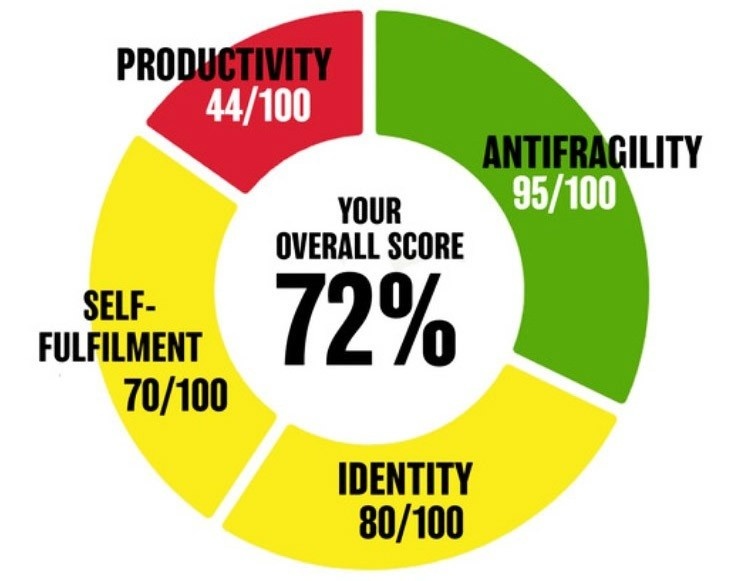SUMMARY
- You feel like there’s a million things to do at once, while also continually forgetting them. You’re not on top of things as much as you’d like. The truth is, until you master the art of using checklists and identifying checklist opportunities, you won’t be performing at the level you want. In this episode, I explain the importance of checklists, and six ways you can use them to level-up your business.
- Why are checklists important? Many tasks we do at work are rather mundane, and oftentimes we need to retrace our steps just so we know we’ve done the tasks perfectly. Checklists prevent us from skipping steps, avoiding potentially detrimental consequences. Entire industries rely on checklists to avoid disasters. Just imagine pilots or surgeons not checking everything on their lists.
- How can you incorporate checklists into your life? First, you can create a checklist for your morning routine. Checking everything on your morning list ensures you’re off to a great start.
- Secondly, at the other end of the day, a checklist for your evening routine will help establish a shutdown habit, ensuring you are well-rested and refreshed the next day.
- Number three, you can have a checklist around your work cycles. You can include on your checklist certain tasks that will increase your efficiency and productivity, like putting your phone out of sight, or spending 50 minutes per hour just doing deep work.
- Number four, you can actually create a checklist on anything that you find yourself doing repeatedly. Your decision-making process, for example, would be something worth creating a checklist for.
- Number five, you can use checklists to improve our meeting preparation. Get the most out of your meetings by making sure you’re fully prepared for each one. Last but not least, you can use a checklist for your weekly review and planning sessions, going through big wins made that week, challenges, and important learnings.
TRANSCRIPT
If you constantly feel like you have a million things to do, you also constantly may feel like you’re continually forgetting things. So, you’re not completely on top of things as you would like to be. The truth is, until you master the art of identifying checklist opportunities and using checklists, you will continue in that fashion and you won’t be playing at the level that you should be playing.
Hi, my name is Eric Partaker, and I help CEOs, entrepreneurs, leaders, and individuals perform at a peak level in both their businesses and their lives. Drawing on my experience from McKinsey & Company helped building Skype’s multibillion dollar success story, as well as building several of my own businesses. And today I’m going to take you through why checklists are important, but more importantly, six ways that you can use checklists in your business in life to drive a higher level of performance.
So, first off, why are checklists important? Well, there are always, and I’m sure you can relate to this, there’ll be tasks that you have to do that may be are rather mundane. And because of the boredom associated with them, you’ll often find yourself having to retrace your steps. What is it that I need to do here again? What’s the order of the sequencing of things? Or you may find that you know what to do but because you don’t have it documented properly, you maybe apply that knowledge incorrectly and you don’t follow, once again, the right steps in the right sequence and you just create more work for yourself. Or you simply forget what to do entirely because there’s just so many things going on. And then too often you think to yourself, gosh, how did I miss that again?
This is where checklists come into play. Interestingly enough, there are certain industries which have long appreciated the need and the power for checklist. For example, can you imagine getting on a plane where the pilot would step out and then announce to everyone, “Hey, everyone, I know we have our pre-flight and take off and landing checklist, but during this flight I’m just not going to use those because I’ve been doing this for years. So, I think we’ll be all right. Is everyone okay with that?” I think everyone would be feeling really uneasy. And if they had an opportunity to get off that plane, you might consider taking it. Now, because of the use of checklists in aviation, it has massively reduced the accident rate. It has massively increased the safety. Surgery is another big area within the medical community. So, before the use of checklists regularly and all the things that were going on within a surgery, the mortality rate was a lot higher than well, it is today.
But after the widespread use of checklists, the mortality rate, the rate of death in a surgery declined by nearly 50%. So, here’s something I’d love you to think about. What if we could reduce the mortality rate, if you will, of your days? What if we could reduce the number of days that you thought, Oh, that day was kind of dead. It wasn’t as good as a winning day. It was an off day. And the way we can do that is through checklists. So, without further ado, let’s jump straight into that. And I’ll give you six ways that you can be using checklist to increase the performance of your days, your business, your life. Number one, you’ve heard this a million times, probably from a million different people, but you should have a morning routine. And the simple way to create that, is by creating a checklist for that routine.
So, for example, I know that what leads to a great morning for me is that if I wake up, if I do a little bit of meditation, I then get some exercise done before the day is about start, and also engage in some creative before reactive, a bit of deep work, fully focused, concentrated on what’s most important for that day, before I get into the reactive mode of answering emails and maybe responding to phone calls and all of that stuff. So, I have a simple little checklist for my morning routine and I literally check it off each morning to make sure that I’m compliant and following to that checklist. The second area is an evening routine. So, if you want to create a productive day, the best way to do that is by beginning the day before. And the area to focus on is your evening.
How you shut down your day will create productivity in your next day. And I have a simple checklist, once again, that I use here. Where I have a shutdown ritual, where I close off my day, choose the top three things I’m going to be working on the next day, program those into my calendar, shut down, boom. Done with work, can focus on the family, I won’t even check an email after that point. Then I have a digital sunset to make sure that all the electronics are off so that I have the maximum amount of melatonin, which is what we need in our brain to sleep restfully, being produced in my body. Because the blue light from the devices of your electronic devices actually lowers the amount of melatonin produced in your brain, especially in that one hour before bedtime. So, I have a digital sunset to go off one hour before I’d like to be going to sleep, such that I get eight hours of sleep to make sure that I’m sleeping restfully. All of that is an evening routine checklist for me.
Number three, you can have a checklist around your work cycles. What do I mean by that? Well, when I sit down for work, I like to work for a 50 minute chunk followed by a 10 minute break. And during those 50 minutes, I’m intensely focused and not distracted. On the checklist is put the phone away out of sight, begin working on whatever I’m doing, and then at 50 minutes, take that break, get up, walk around. That’s the cycle. Three simple points, distractions eliminated, focus on what I’m working on, take a break at 15 minutes, start again. A fourth thing that you can be bringing a checklist to, to increase your productivity, your success, your performance, is anything that you find yourself doing repeatedly. For example, if you’re suddenly finding yourself making a decision more than once, that’s probably a perfect opportunity to turn whatever that decision making process is into a checklist so you can do it more quickly.
And here’s another power tip, once you’ve done that, can you delegate with the power of that checklist that decision making to someone else on your team or within your peer group? Number five, we can use checklists to improve our meeting preparation. Lots of people don’t get as much as they should out of meetings because they’re not prepared for them. If you are a leader, you might be able to relate to the importance of doing this. As a CEO of my own company, one of the things that I recognized was the importance and the significance of our weekly team meeting. But I realized also that I wasn’t always as prepared as I could be for that meeting. So, what did I do? I created a simple checklist one hour before that meeting began, which I went through all the items in that list.
And they included things such as, quickly referring back to all the one on one meeting sheets with my direct reports, looking at the weeks previous commitments, looking at the metrics of the company, taking a look at any meeting notes or follow-ups that I had agreed to at any prior interactions from the week before. And by doing all of that, I came into the meeting much more prepared. But I did that, once again, through the power of a checklist, so I didn’t forget to check on all those various things. The number six area where you could be bringing a checklist to improve your life, your performance, your business, is through a weekly review and planning session. Now, in my weekly review and planning session, which once again is a checklist for me, I simply have that as a meeting appointment with myself in my calendar. And I open up that appointment, and in the meeting description, I have, voila, a checklist.
And in that checklist, I’m simply going through the same things every single time. So, for my weekly review, I’m looking back, what were my big wins for the week? What are the top three things, accomplishments, that I’m quite proud of? I also look at, well, what are the top three things that I had said that I was going to do this week, and how well did I do? And then I ask myself, what did I learn from the week? What could I have done better? I then go into the planning part of the checklist, which requires that I look at my calendar for the week ahead. I note any important appointments. I choose my top three objectives for the week. And then I make sure I drop those objectives into the various white spaces of my day. Boom. I’m often running to a great week having properly reviewed the week before and properly set up the next week for success.
And let me end with a story about reliability. So, one of the hallmarks of great leadership, one of the hallmarks of being a great CEO, is being relentlessly reliable for the people that you’re leading. You can’t expect to hold people up to high standards if you’re doing things like promising to follow up but then not following through. If you’re saying that you’re going to have something done by a certain date, but then it’s not done on time. Or if you just don’t show up properly for meetings or prepared well enough. And so, what I did is, every time that I noticed an instance of me not being relentlessly reliable, I noted that in my journal and I put a little RR next to it. So, noted whatever it was, was late for a meeting or wasn’t prepared. Didn’t send the follow-up email as I had promised by the day I had promised. And I would just put an RR next to that when I noticed it. And over time, when I looked at those relentless reliability notes, what emerged were checklists opportunities.
What are various opportunity? What are various things in which I could create a checklist to help me not miss those things going forward? So, for example, one of the things that emerged from that, was that I came up with a very, very simple follow-up checklist from a meeting. So, anytime I completed a meeting, I had a little checklist that I referred to, which simply said, update my to do list with any action items from the meeting, schedule any follow-up email creation in my calendar. Where you say, for example, that I’ll follow up with that information, or I’ll get back to you on that. I scheduled that in as an appointment in my calendar. And also, to compliment or pay gratitude. Because sometimes when you’re in a meeting, you recognize somebody’s great performance, or you’re really happy with what a member of the team has done.
And what I realized that I wasn’t doing enough, was letting people know about that. But by having that simple meeting follow-up checklist, I started to do these things more habitually. Over time, I didn’t even need the checklist but I still refer to it. Because remember back to the beginning of this, imagine if that pilot came out and said, “Yeah, I think I got this all down pat. I’m not going to be referring to this checklist during this flight.” You wouldn’t like that. So, keep referring to those checklists because they ensure that you won’t miss the mundane, and they ensure that you’re constantly operating at a super high level. And the beauty of that, is it frees up mental space for you to be thinking about the truly important things, and not chasing your tail trying to remember all the things that you shouldn’t be spending your time trying to remember.




